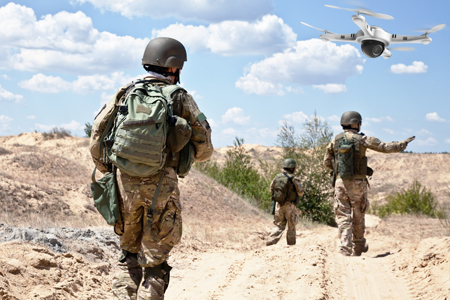Military Sector

Military groups have pondered the issue of how to counter unmanned aircraft for several years. For example, in 2003, NATO launched a ten-year study on how to defend against low, slow, and small aerial targets using ground-based defense systems. In the military domain, small drones have been proliferating at a rate that has alarmed battlefield commanders and planners alike. In the conflict in Syria and Iraq, at least half a dozen groups operate a wide variety of drones, which give even the most poorly funded actors an aerial command of the battlespace that can prove decisive in engagements. For example, ISIS has used drones to help guide vehicle-borne IEDs more accurately toward their targets. there are so many drones operating in the conflict in Syria and Iraq that one Army official even said that the U.S. has no control of the airspace below 3,500 feet in the area. Military anti-aircraft radars are mostly designed to detect large, fast moving objects. The air defense systems that have traditionally been used to protect airspace from manned aircraft are generally ineffective against drones.(‘COUNTER-DRONE SYSTEMS’Arthur Holland Michel, February 2018)

In the future, the drone uses are expected to increase in military purposes on the battlefield. DABIN Systems will continue to develop and innovate Counter UAV System, which adopts new technologies like AESA, to be used continuously in the field of surveillance and reconnaissance as well as in the battlefield.
